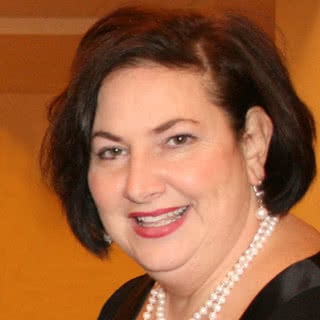
Making Nursing Home Visits Meaningful
Measuring Stroke Severity and Recovery Time
4 Ways CCRCs Help Seniors Stay Healthy
3 Signs It’s Time to Talk to Mom About Safety Concerns You Have

Celebrating holidays at your senior living community is always a great idea. It not only is a great way for your residents to have fun, but it also gives them a chance to interact with and spend quality time with others. With Halloween less than a week away, below are some ideas for your community to celebrate Halloween this year.
· Decorate Your Community
Throw a decorating party for your residents so that they can get into the spirit of the holiday. Provide materials, such as cobwebs, orange and black streamers, small pumpkins and even plastic spiders.
· Host a Scary Movie Night
Host a scary movie night for your residents & maybe even their family, by showing vintage horror films, such as The Bride of Frankenstein, Dracula, Psycho, Alien or The Thing. Provide some movies snacks too, such as popcorn, candy and juice. Many younger people haven’t seen the old “sceemy-meemies”.
· Trick or Treating in Your Community
Although your residents may be a little too old to go trick or treating, you can invite their families and even neighborhood kids to come trick or treating at your community. Each room at your community can hand out candy. Or host a Trunk-or-Treat in the parking lot sponsored by vendors or departments.
· Pumpkin Contest
Give your residents pumpkins for them to decorate. They can either carve them or paint them, to avoid the mess of pulling the gook out of the pumpkins, and the danger of knives. Either way, they will surely have fun in this creative process.
· Throw a Costume Party
Invite your residents to get dressed up for Halloween, as well as you and the staff. Provide everyone with music and food and encourage the residents to dance, mingle and have fun. You can even partner with a local senior living community to throw an even bigger costume party. The party can be anything from a simple potluck affair with bingo and dancing, to an elaborate party with carnival games, costume contests and a haunted house.
Whatever you decide to do this Halloween for your residents, remember those that might be alarmed by changes, including decorations, and help them celebrate in a safe and fun manner, and take lots of pictures to share with families thru your social media channels (just make sure you have releases).
Check back next week for more on social media policies.

Advances: How to Measure Daily Success in Senior Living Sales
5 Reasons Why Veterans Overlook the Aid and Attendance Pension
Nutrition for Seniors: 5 Steps to Improve a Senior’s Nutritional Health
Trends Revolutionizing Senior Housing Design and Construction

Finding Temporary Care for Seniors Displaced by Hurricane Disaster
Taking Over Your Aging Parents’ Finances
Does Your Retirement Plan Overlook This Crucial Decision?
5 Tips After Caregiving is Over
Home Care Options Afford a Chance for Seniors to Feel Less Isolated

Carlene Motto is the Chief Marketing Officer for Belmont Village Senior Living. She oversees the sales department, marketing department and product management, which includes their memory program component.
“My roles and responsibilities are understanding the unique needs of our residents and families and what’s important to them from a customer expectation standpoint,” Carlene said, in a recent interview. “I also look at marketing innovation, with regard to collateral, messaging, advertising and digital marketing experts. But most importantly, I hire best in class sales associates to work closely with our residents and families.”
Carlene has been working for Belmont Village for 14 years and has been in the senior living industry for more than 25 years.
Belmont Village Senior Living offers Independent Living, Assisted Living, Memory Care and Short Stays for seniors. According to Carlene, they also offer a wide variety of choices, amenities, activities and evidence-based programs, backed by research and supported by a strong care team. Belmont Village has 26 locations throughout the U.S. and in Mexico City. Their newest location opened in California in July and is affiliated with the University of California at Berkeley. Programs and services are designed with retired faculty and staff of the university in mind.
Carlene said her grandparents were a huge influence for her to get into this business because she was very close to them. “I spent many holidays and vacations with my grandparents and they brought a lot of joy to my life and helped shape my career. I just really enjoy the senior living sector and I love all there is to learn from seniors and their experiences.”
Since Belmont’s founding in 1997, Carlene said they have always strived to be the best, not the biggest, and their commitment has been to continuously work to elevate their care and hospitality services. “I think Belmont Village does a fantastic job of blending the hospitality and the care component that our residents and families have come to expect. We also have very innovative programming, especially in the area of brain fitness and serving individuals with mild cognitive impairment and Alzheimer’s disease.”
At Belmont Village, they have various unique clubs and programs for their residents. Their Whole Brain Fitness lifestyle was developed to encourage successful aging. They nurture and engage the residents’ mind, body and spirit each day, in seven essential elements that include the right nutrition and physical exercise, mental workouts and lifelong learning, reduced stress, a strong social network and a sense of purpose. Each element of the lifestyle is important and supports the others, but what makes it unique is their emphasis on mental fitness in all of their programs for every phase.
The Mind Body Awareness Club is a self-directed, research-based program for more active residents, with brain and body boosting activities noted on daily calendars so residents can make smart choices. The Circle of Friends program is a structured, seven-day-a-week program for mild cognitive impairment and early-stage memory loss. The activities and exercises are done in small, ability-centered groups that are led by a dedicated, specially trained team. The Person-Centered Living for Alzheimer’s Care program has daily wellness checks, assistance with activities of daily living and is personalized based on individual strengths.
Carlene said that when it comes to this industry, senior living professionals challenge each other to always be better. “When we challenge each other, that ultimately provides a better product and service for all of the residents that we serve. As an industry, there are different levels of care support services that cater to different residents and their needs. Together, I think there’s a lot of collaboration, but I think there’s also a nice friendly way to constantly challenge each other to provide the best product and the best services possible to our residents.”

When it comes to looking for a senior living community for your loved one, it is essential to keep in mind the importance of physical, mental and social activities and programs that the community offers to their residents. It has been proven that staying physically active as you age can improve your overall quality of life. Active seniors are not only generally in better overall physical health, but mental and emotional health too.
Someone who knows all about physical, mental and social importance for seniors is Beverly Sanborn. Beverly is the Vice President of Program Development for Belmont Village Senior Living. She plays the program leader role in developing all of Belmont’s new activity protocols and all of the training for staff.
“I have been with Belmont Village for 13 years and in this industry for about 30 years,” Beverly said in a recent interview. “I just stumbled into this senior living business and decided to do it because I became fascinated with it.”
Belmont Village Senior Living offers Independent Living, Assisted Living, Memory Care and Short Stays for seniors. Beverly said they also offer a wide variety of choices, amenities, activities and evidence-based programs, backed by research and supported by a strong care team.
Beverly said she loves working in this field because she likes working with people who have Alzheimer’s and other cognitive issues. “I like to tune into how they cope and what their thought processes are. Those with memory loss need some outside support and if they have the right kind of support, then they can still have a really good life.”
She said she also loves to work with the families at Belmont Village because it can be very difficult for family members when their loved one has Alzheimer’s. “Most of our families are so noble and it’s very touching to me – they need support too. But my absolute favorite part of my job is working with the staff and teaching them how to work with people who have Alzheimer’s to help give them a rich and fulfilling life. That’s the best thing we can do for residents and their families.”
Belmont Village has 26 locations throughout the U.S. and in Mexico City. Their newest location opened in California in July and is affiliated with the University of California at Berkeley. Programs and services are designed with retired faculty and staff of the university in mind.
“All of our buildings are located in areas that have major research facilities, particularly those in Texas, California and Chicago,” Beverly said. “They are all close to major universities and large hospitals that do research.”
Belmont Village specializes in a lifestyle program called Whole Brain Fitness.
“We’ve developed a Whole Brain Fitness lifestyle for our residents, to encourage successful aging,” Beverly said. “That means nurturing and engaging mind, body and spirit each day, in seven essential elements that include the right nutrition and physical exercise, mental workouts and lifelong learning, reduced stress, a strong social network and a sense of purpose. Each element of the lifestyle is important and supports the others, but what makes it unique is our emphasis on mental fitness in all of our programs for every phase.”
At Belmont Village, the Mind Body Awareness Club is a self-directed, research-based program for more active residents, with brain and body boosting activities noted on daily calendars so residents can make smart choices. The Circle of Friends program is a structured, seven-day-a-week program for mild cognitive impairment and early-stage memory loss. The activities and exercises are done in small, ability-centered groups that are led by a dedicated, specially trained team. The Person-Centered Living for Alzheimer’s Care program has daily wellness checks, assistance with activities of daily living and is personalized based on individual strengths.
“We keep people engaged in life itself so that their life is full and meaningful,” Beverly said. “We take care of people and don’t give up. One of our specialties is to provide them with all of the assistance that they need to help them be as independent and successful as possible.”
Beverly said that Belmont Village is famous for their exercise programs because they were the first assisted living community to have a gym and physical therapists. “Physical activity is extremely important at Belmont Village. We also have a very extensive menu with many brain and heart healthy type foods that are very tasty.”
Having a social life is also very important to the staff at Belmont Village because it helps not only your brain, but your heart and overall health, according to Beverly. “Our programs for enhancing memory care are outstanding because they keep their minds agile, quick and alert. Our Circle of Friends program has won many awards and we always encourage participation in every activity because it’s so important.”
When it comes to choosing an appropriate senior living community for your loved one, Beverly said that people need to look for the kind of quality and hospitality that is important in a senior community. She said to look for the high-quality commitment that comes from the owners, managers and all of the staff at the community to make sure their residents live healthy, happy, fulfilling and enriched lives. You want to look for a community that expresses their devotion to the seniors.
“I recommend that people visit communities at meal time, especially if your loved one has a type of memory loss,” Beverly said. “When you visit at meal time, watch for how the meals are served and how the seniors are treated. When you visit for a tour, come unexpectedly so you can see how the community truly is and how you are greeted and treated. You want to find a place where your loved one will feel like it’s home because the social atmosphere is the most important aspect when it comes to finding an appropriate senior living community for your loved one.”

As a caregiver, your time is valuable, but it is important to stimulate your mind. Going back to college is one way to broaden your horizons and create more opportunities for yourself. The issue is finding the resources and time to get started and continue your college career. A balance is necessary to refrain from burnout from stress and work.
Whether you are a part-time caregiver for an independent senior or a full-time caregiver for your loved one, it is a good idea to take time to plan out your goals and schedule for schooling. Before you get started, create a plan that will break down your preparation step-by-step. Since you are familiar with your schedule and routine for caregiving, you should sit down and decide how much time you can give to school. Remember that you need to include class time and study time. Most schools recommend allowing two to three hours study time for each hour of class time.
You probably already have a budget for caregiving, which may include groceries, transportation and even medications, but it is a good idea to also create a budget for school. College is expensive and you will have added fees for books, supplies and possibly clothing for some classes. Depending on your number of class hours, you may be eligible for federal financial aid. Beyond applying for financial aid through your school, you may be able to find local scholarships from churches, caregiver support organizations or online. Talk to the school’s financial aid office regarding other aid resources. You can also make payments to most colleges directly or through a third-party service.
Assistance is always available if you ask for it. You should ask for help from friends and family to cover your caregiving duties when needed. You can also see if there is a local support organization for caregivers that can help with coverage. If you are too busy with school some weeks, then you may want to think about hiring a part-time caregiver, or a home health professional to take care of your loved one, so consider In-Home Care as an option. Other assistance, such as financial help from family may be available through work grants and loans. You will never know unless you ask.